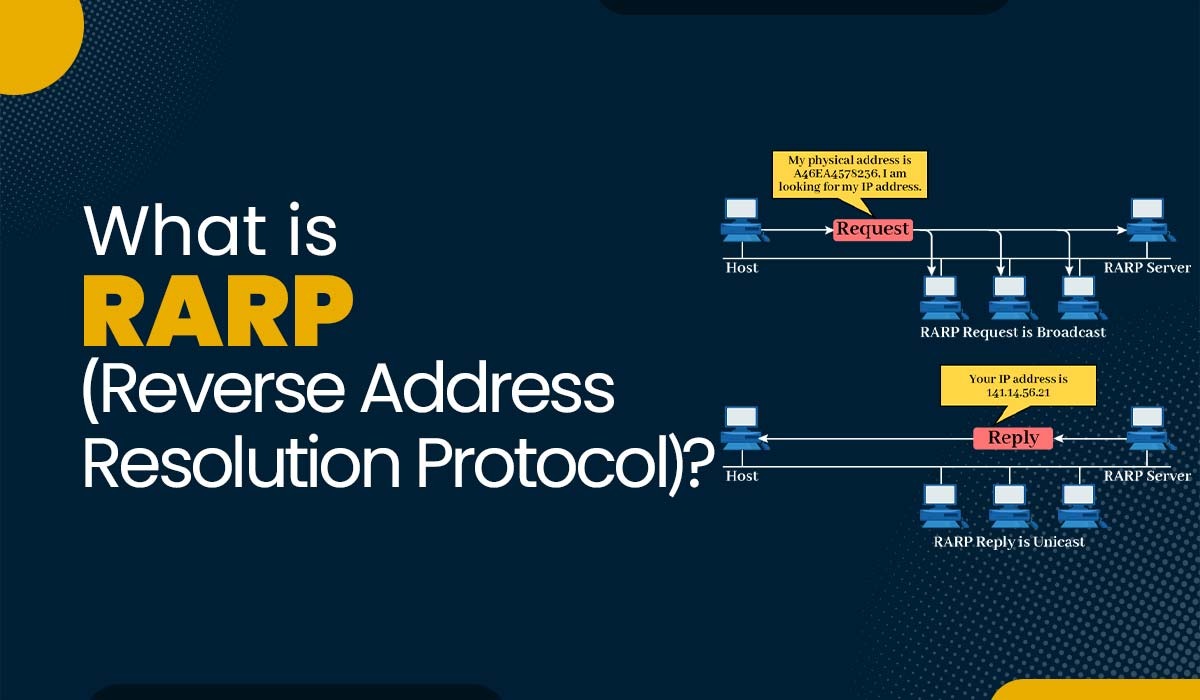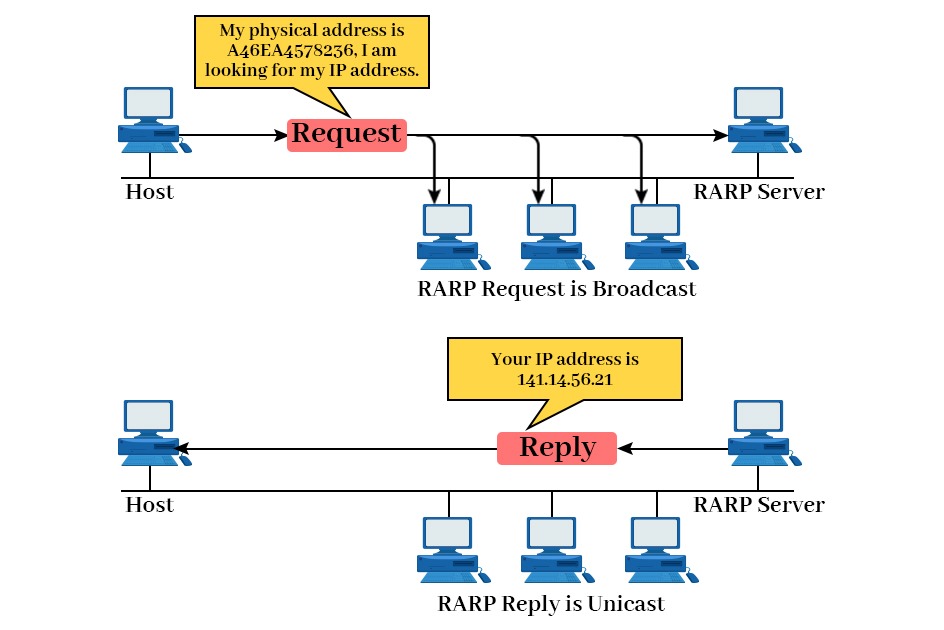What is RARP (Reverse Address Resolution Protocol)?

Reverse Address Resolution Protocol, also known as reverse ARP, is a networking protocol used to link a MAC address with an Internet Protocol (IP) address. It is the inverse of the Address Resolution Protocol (ARP), which links an IP address with a MAC address. RARP was originally developed in the stages of computer networking as a means to assign IP addresses to diskless workstations or other devices that were unable to store their IP addresses. In this blog, we will explain the RARP protocol, its purpose, and how it works, along with its advantages and disadvantages. Let’s first understand what RARP really is. RARP stands for Reverse Address Resolution Protocol, which is the inverse of the more commonly used Address Resolution Protocol (ARP). ARP is a protocol that maps an IP address to a MAC address, which is needed for data link layer communication. RARP, on the other hand, maps a MAC address to an IP address, which is needed for network layer communication. During its inception, RARP was designed specifically for devices such as diskless workstations that lacked the capability to store their IP addresses. In this scenario, these devices would broadcast their MAC addresses and request an IP address. A RARP server on the network would then respond with an IP address corresponding to that MAC address. The functionality and operation of RARP are documented in RFC 903. It functions within the data link layer of the OSI model. ARP and DHCP have largely replaced it in networks. It had a significant impact on the evolution of computer networking protocols and is still utilized in specific situations. Now that we have a basic understanding of reverse ARP, let’s discuss its purpose. The primary goal of the Reverse Address Resolution Protocol (RARP) is to allocate IP addresses to devices that lack storage or configuration files to store their IP addresses. These devices include workstations, embedded systems, network printers, routers, and switches. RARP enables these devices to dynamically acquire an IP address from an RARP server. The RARP server maintains a table associating MAC addresses with corresponding IP addresses. Once obtained, the device can utilize this IP address for communication with network devices or for accessing network resources. Additionally, the RARP protocol plays a role in preventing conflicts related to IP addresses. By ensuring that each MAC address is assigned an IP address, the RARP server prevents instances where two devices share the IP address within the network. Such conflicts can lead to communication errors and disruptions in network connectivity. We have explained what RARP is and its purpose. Let’s move on to the working of reverse ARP. The functioning of RARP can be summarized as follows: Now, we have discussed the working of RARP Protocol. It is time to understand its advantages and disadvantages. Some advantages of utilizing RARP include: Apart from all the advantages, RARP also has some disadvantages. Some disadvantages of using RARP are: The Address Resolution Protocol (ARP) is a protocol used in computer networks to associate an IP address with the address (MAC address) of a device. On the other hand, the Reverse Address Resolution Protocol (RARP) does the opposite by mapping a MAC address to an IP address. In terms of name resolution, Reverse ARP is a network protocol that enables a device to obtain its IP address based on its address. It sends out a broadcast request containing its MAC address and waits for a response from a server that holds the IP MAC mapping. RARP and Bootp are two protocols utilized for assigning IP addresses to devices in a network. RARP, which stands for Reverse Address Resolution Protocol, accomplishes this by sending out a broadcast request to an RARP server in order to map a MAC address to an IP address. On the other hand, Bootp (Bootstrap Protocol) is an improvement of RARP that provides additional information such as subnet mask, gateway, and hostname. Bootp uses UDP and can be routed across networks. Reverse Address Resolution Protocol or RARP Operates at layer 2 (data link layer) of the OSI model. RARP, which stands for Reverse Address Resolution Protocol, is a protocol used to link a MAC address to an Internet Protocol (IP) address. However, due to its limitations, RARP is not suitable for networks. Instead, newer protocols like DHCP (Dynamic Host Configuration Protocol) have taken its place. DHCP offers flexibility and functionality in assigning IP addresses. RARP is still used in applications such as booting embedded systems and configuring network devices with pre-assigned IP addresses. ARP and RARP Protocol are important part of CCNA Course.Introduction
What is RARP Protocol?
Purpose of Reverse Address Resolution Protocol
How does Reverse Address Resolution Protocol work?

Advantages of RARP Protocol
Disadvantages of RARP Protocol
Frequently Asked Questions
Q1. What is address resolution protocol and reverse address resolution protocol?
Q2. What is reverse ARP name resolution?
Q3. What is RARP and Bootp?
Q4. What layer is RARP in the OSI model?
Conclusion







